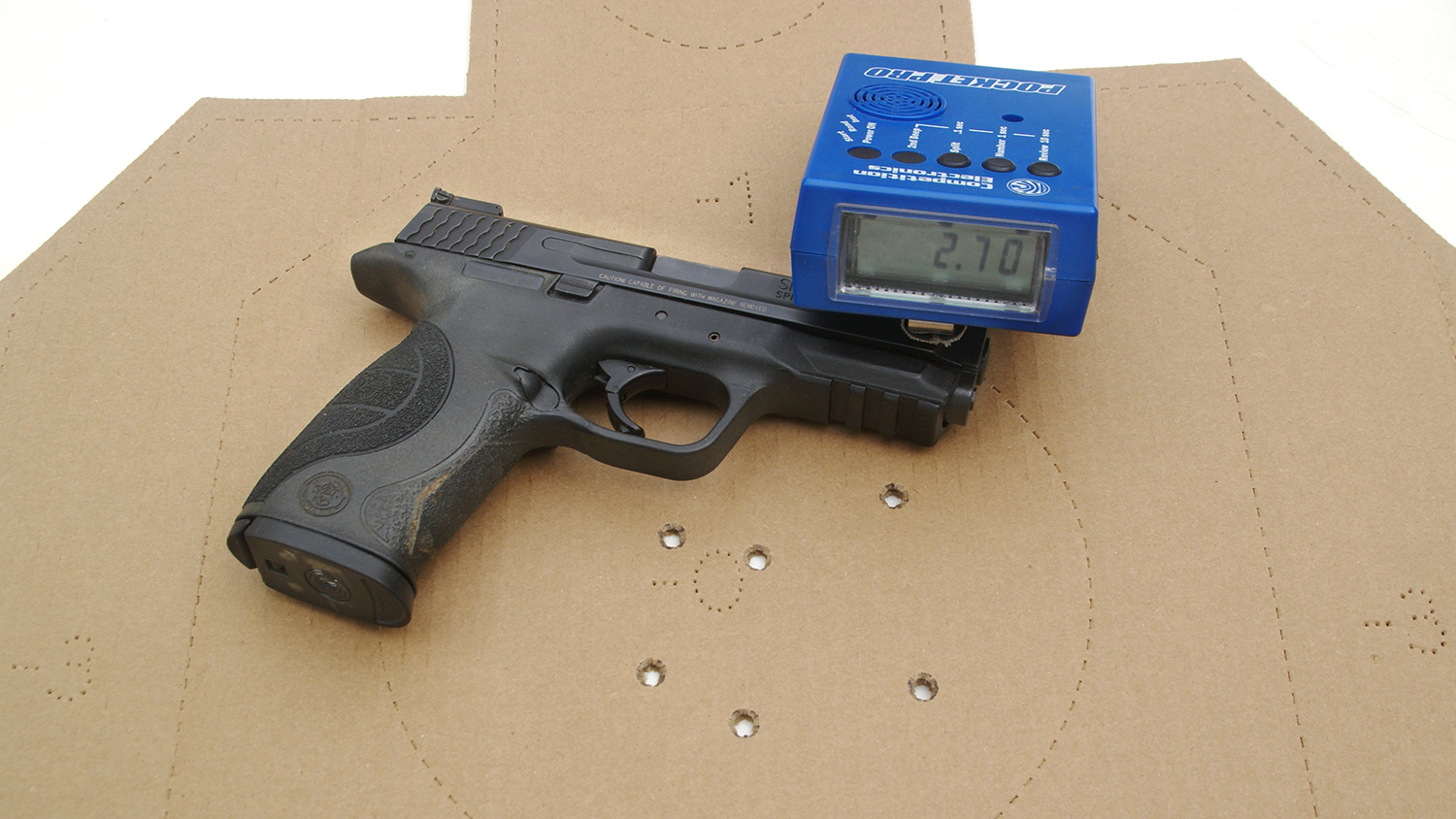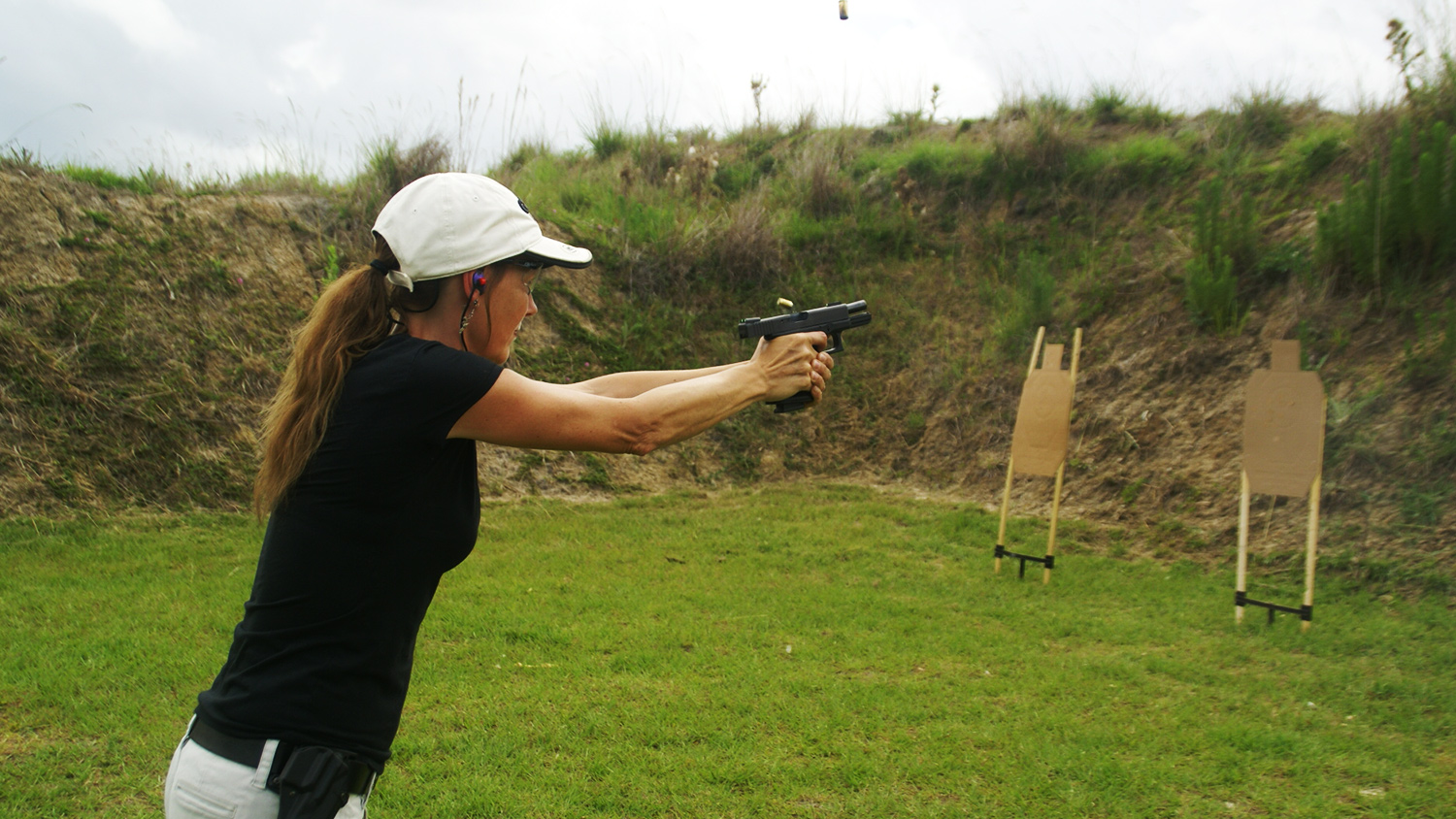
Every action pistol competitor, regardless of their game, needs to be able to draw smoothly, acquire their target quickly, and hit it repeatedly—and accurately.
That’s a lot of “stuff” going on during that seemingly simple evolution.
The draw is, obviously, critical. If the shooter bobbles that, life gets ugly fast! Even if the draw is smoothly executed the shooter still has to get their sights on target, trigger the first shot, recover from recoil and fire again. There are a myriad of mental skill sets required, as well as the physical requirements of a solid grip and shooting stance.

There are several training drills, like the Double Tap and the Transition Drill that can help develop those skill sets. But when it comes to pure speed, recoil control, and the ability to follow the sights, the Bill Drill is one of the best.
Created by Bill Wilson (one of the founders of the International Defensive Pistol Association, a.k.a. IDPA) it’s simple to set up on any range that allows rapid fire. A single USPSA target is placed at seven yards. The gun is loaded with six rounds; making the drill applicable to revolvers or semi-autos. A timer is used. The gun is holstered and the starting position is the hands-above-the shoulders in the surrender position.
At the BEEP, the shooter draws and fires six rounds as rapidly as they can get the sights onto the target’s A Zone. Only perfect hits count. Any hits outside that is a failure. Some shooters will run this drill with the normal “hands relaxed at the sides” starting position. Others use IDPA or ICORE targets, and they are just as valid as long as the hits stay in the -0 or A Zone.
What times are good? The elite Masters consider a low two second run to be par, but anything under three seconds is Master Class shooting.
More important than times, however, is what this tells the shooter about their grip, stance, and draw stroke. This drill emphasizes every aspect of action pistol shooting.
Although originally shot from the holster at seven yards, it doesn’t have to be to prove useful. Moving targets back to 10, 15, or even 25 yards, and starting from a Low Ready, is an excellent way to experiment with grip and stance—with both handguns and Pistol Caliber Carbines.
That makes it as much a “skill checker,” as it is a “skill builder.”


































